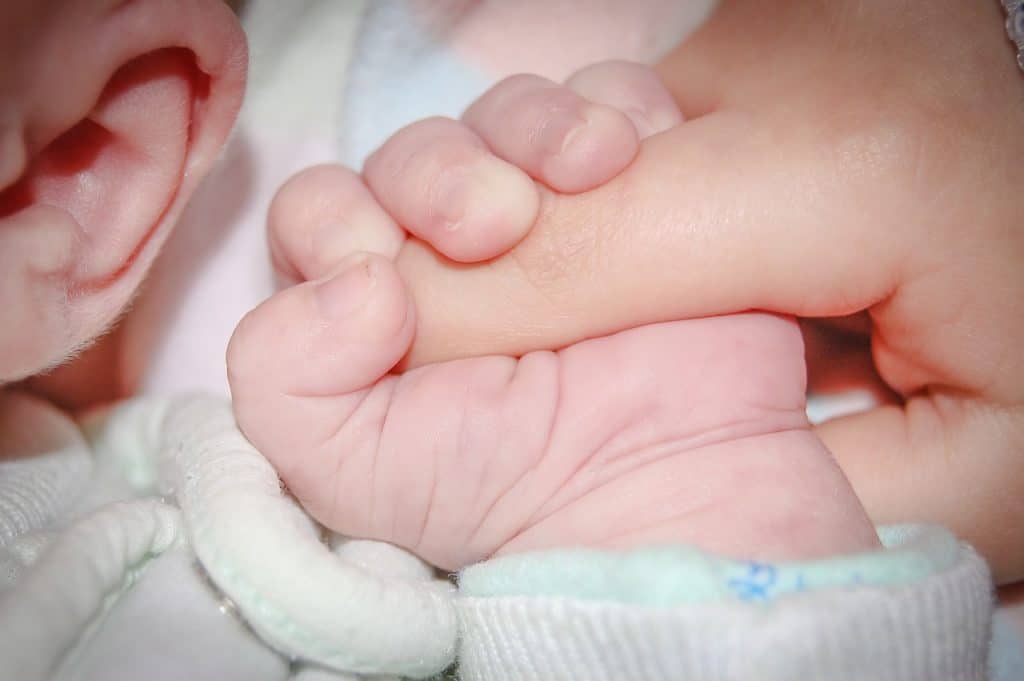
CORD BLOOD BANKING IN LAVAL QUEBEC
What is Cord Blood banking in Laval Quebec?
Cord blood banking is a procedure that has been gaining increased attention in the medical world for its potential to help treat a range of diseases and medical conditions.
In simple terms, cord blood banking involves collecting and storing stem cells from a newborn’s umbilical cord. These stem cells are rich in potential and can be used to help treat a range of illnesses, including certain cancers, blood disorders, and genetic diseases. As a result, many expectant parents are now considering cord blood banking as a way to secure their child’s health for the future.
The process of banking umbilical cord blood involves collecting the blood immediately after birth and sending it to a specialized facility for processing and storage.
The cost of storage can vary depending on the service provider and the length of storage time chosen. There are many factors to consider when deciding whether to bank cord blood, including family medical history and the potential future use of the stem cells.
What is cord and tissue banking in Laval Quebec?
Cord tissue banking involves the collection and storage of the cord tissue, which is the gel-like material that surrounds the blood vessels in the umbilical cord. This tissue is rich in stem cells, which are the building blocks of the body’s immune and blood systems. The stem cells found in cord tissue are different from those found in cord blood, making it a valuable resource for future treatments.
Umbilical cord blood and tissue collection in Laval Quebec?
Umbilical cord blood and tissue are collected immediately after birth via a non-invasive and pain-free procedure.
The umbilical cord is clamped and cut as usual, but instead of discarding the placenta and umbilical cord, they are collected by a trained healthcare professional.
The blood is extracted from the cord using a sterile needle and collected into a specialized bag with anticoagulants to prevent clotting. The tissue is collected by cutting a small piece of the cord and placing it into a sterile container.
Both cord blood and tissue are then transported to a laboratory for processing and storage.
This procedure is a safe and effective way to collect valuable stem cells that can be used for future medical treatments.


Umbilical cord blood and tissue storage near Laval Quebec
Umbilical cord blood and tissue are valuable sources of stem cells, which have the potential to treat a wide range of diseases.
To ensure the preservation of these stem cells, they are collected at the time of birth and stored in specialized facilities.
The most common method of storage is cryopreservation, where the stem cells are slowly frozen and stored in liquid nitrogen at -196°C.
This ensures that the stem cells can be retrieved and used for medical purposes for many years to come. Additionally, many cord blood banks also offer the option to store the umbilical cord tissue, which contains a different type of stem cell that can also be used for medical treatments.
Overall, proper storage of umbilical cord blood and tissue is crucial for their potential use in future medical treatments.
Laval, Quebec is an often-overlooked city situated just north of Montreal. Known for its rich history, cultural diversity, and stunning natural scenery, Laval offers visitors and locals alike an unforgettable experience. This sprawling city has something to offer for everyone, whether you’re a history buff, a foodie, or an outdoor enthusiast. In this blog post, we will explore Laval’s hidden gems, cultural landmarks, and exciting attractions. From picturesque parks and gardens to boutique shops and world-class restaurants, Laval has it all. We will guide you through the city’s most popular and lesser-known places, allowing you to experience Laval like a true native. Whether you’re looking to explore the city on your own or join a guided tour, there’s no shortage of activities to enjoy in Laval. With its lively cultural scene, exciting events calendar, and welcoming locals, Laval is quickly becoming a must-visit destination in Quebec. So, sit back, relax, and let’s
1. Laval is the largest suburb of Montreal, Quebec, Canada
Laval is the largest suburb of Montreal, Quebec, Canada. It is situated in southwestern Quebec on Île Jésus, north of the Island of Montreal. Laval is the third most populous municipality in the province, behind Montreal and Quebec City, with a population of over 440,000 residents as of 2021. The city’s landscape is defined by its diverse neighborhoods, of which there are 21 in total. With its proximity to Montreal, as well as its own array of residential, industrial, and commercial districts, Laval has become a significant economic powerhouse, attracting major businesses and investors to the area. The city’s vibrant culture is further enriched by its thriving arts and music scenes, as well as its many outdoor recreational spaces and parks.
2. It is the third-largest city in the province
Laval is a thriving city in the province of Quebec renowned for its fascinating history, culture, and striking natural landscapes. With a population of more than 400,000, Laval is the third-largest city in the province, only after Montreal and Quebec City. It is located on the north shore of the Saint Lawrence River, just north of the Island of Montreal, making it a prime location for those who want to experience both city and suburban living. From its innovative developments to its cultural diversity, Laval offers an exceptional quality of life that caters to a wide range of preferences and lifestyles.
3. It is home to over 430,000 people
Laval, Quebec is a bustling city located in the province of Quebec, Canada. It is the largest suburb of Montreal and the third largest municipality in the province. One of the reasons for its impressive size is that it is home to over 430,000 people. The community of Laval is diverse and multicultural, with many different ethnicities represented in its population. The city is continuously growing and developing, with new businesses and residential areas being built regularly. Laval offers its residents a high quality of life with access to various amenities, including parks, community centers, schools, and shopping centers. It is a vibrant and rapidly expanding city, making it an attractive destination for both visitors and new residents alike.
4. It is one of the most diverse cities in Quebec
Laval, Quebec is a vibrant and diverse city that has a lot to offer residents and visitors alike. With a population of over 430,000 people, it is one of the largest cities in the province. One of the highlights of Laval is its diversity, with a rich tapestry of cultures and communities represented throughout the city. In fact, Laval is one of the most diverse cities in Quebec, with close to one-third of its residents being born outside of Canada. This diversity is reflected in the city’s many restaurants, shops, cultural events, and festivals, which showcase the unique traditions and flavors of Laval’s diverse community. Whether you are looking for authentic international cuisine, cultural performances, or simply a chance to connect with people from around the world, Laval is a city that celebrates and embraces diversity.
5. It is the home of many industries, such as aerospace and biotechnology
Laval, Quebec is known for being home to many industries, including aerospace and biotechnology. It plays a prominent and important role in Quebec’s economy due to the presence of various industries that hold significant national and international importance. Aerospace is one of the most prominent industries in Laval, with several large companies involved in research, design, and manufacturing of space and aircraft technologies. Biotechnology is also a critical sector, and Laval has some of the world’s top biotechnology firms that develop and produce products that are highly regarded globally. Laval’s diverse and thriving business environment is indicative of the region’s robust economic growth, and its potential to continue leading in diverse sectors.
6. It has a rich culture with an abundance of art galleries, museums, and theatres
Laval, Quebec is a vibrant city with a rich culture that offers an abundance of art galleries, museums, and theatres. The city hosts a variety of cultural events throughout the year, highlighting local and international talent. Art-lovers will enjoy the numerous galleries showcasing contemporary and traditional art, while history enthusiasts will appreciate the many museums dedicated to chronicling the city’s past. The cultural scene is further enriched with multiple theatres that offer a wide range of performances, from plays and musicals to ballets and operas. Laval’s thriving cultural landscape is a testament to the city’s commitment to promoting artistic excellence and preserving its heritage for generations to come.
7. It has a vibrant nightlife with many restaurants, bars, and clubs
Laval, Quebec boasts a bustling city center with a dynamic and active nightlife scene. Visitors and locals alike can choose from a wide array of restaurants featuring a range of cuisines, from traditional Quebecois fare to international fusion. The city is also home to numerous bars, pubs, and clubs, offering entertainment for every taste and preference. Whether you are in the mood for cocktails, dancing, or live music, Laval has a vibrant nightlife that caters to a diverse and cosmopolitan crowd. With so many options to choose from, Laval is a destination that promises to keep guests entertained well into the night.
8. It is home to many parks and natural attractions such as the Montmorency Falls
Laval is a city situated in Quebec that boasts many natural attractions and a vast green space. Among these natural attractions is the Montmorency Falls, which is one of the city’s most popular attractions. The falls are named after François de Montmorency-Laval, who was the first Roman Catholic Bishop of Quebec. This breathtaking natural wonder is located a mere 15-minute drive from Laval, and it is twice as high as the Niagara Falls. Additionally, Laval is known for its many parks; the city has over 70 parks, each of them offering a unique experience for visitors. Therefore, it is easy to see why Laval is considered a haven for nature and outdoor enthusiasts.
9. It is known for its many festivals and events throughout the year
Laval is a city in Quebec, Canada, that is known for its many festivals and events throughout the year. The city hosts a range of events, including cultural and sporting events, that are aimed at celebrating the diversity of the community and bringing people together. From music festivals, like the Festival de Laval en rires, to sports events, like the Laval international soccer tournament, the city offers a variety of events for people of all ages and interests. Laval’s vibrant arts and culture scene is highlighted during its annual Laval en blues festival, which features world-renowned blues musicians. Additionally, the city organizes the Fête nationale, Canada Day, and the Christmas Market, among many other events, which provide a wonderful opportunity for visitors to experience Laval’s unique and colorful culture.
10. Baby cord blood banking in Laval Quebec
Cord blood banking is a medical process that involves collecting and preserving the blood from the umbilical cord of a newborn baby. This blood contains stem cells that have the potential to treat a variety of medical conditions. Cord blood banking has become increasingly popular in recent years, and in Laval Quebec, there are several companies that offer this service. One notable provider is the Baby Cord Blood Bank, which is located in Laval and provides cord blood banking services to families in the area. The Baby Cord Blood Bank uses state-of-the-art technology and superior storage methods to ensure the long-term viability of the cord blood samples. Families who choose to store their baby’s cord blood with the Baby Cord Blood Bank can have peace of mind knowing that their child’s stem cells are safely preserved and available for potential future use.
In conclusion, Laval, Quebec, is a vibrant and thriving city that offers a little something for everyone. From its rich history, diverse culture, and stunning natural landscapes to its thriving economy, exciting restaurant scene, and abundance of recreational activities, Laval truly has it all. Whether you’re a local resident or a tourist looking to explore all that Quebec has to offer, Laval is a city that certainly won’t disappoint. So next time you’re planning a visit to Quebec, make sure to add Laval to your itinerary – you won’t regret it!

Stem cells, umbilical cord blood and tissue collection in Laval Quebec
“Photographing the First Breath — and the Silent Gift That Followed”
I’ve spent over a decade capturing the first cries, first gazes, and first breaths of brand-new lives. As a birth photographer, my job is to preserve the fleeting — the emotion, the rawness, the sacred quiet that follows chaos. But there’s one moment, often overlooked, that I’ve come to recognize as one of the most powerful: cord blood collection.
It’s not dramatic. It’s not loud. It doesn’t beg for attention.
And yet, tucked between the awe of birth and the hush of skin-to-skin, it’s a moment where science, love, and the future all intersect.
Umbilical cord blood and tissue storage near Laval Quebec
A Photographer’s View: The Scene Behind the Lens
In the delivery room, everything happens in waves. A contraction, a breath, a cry. Then, in a blink, the baby is here. There’s joy. There’s relief. There’s focus.
As the doula or nurse brings the newborn to mom’s chest, and the OB delivers the placenta, a second team steps in — calmly, gently. A collection kit appears. Tubing, a sterile bag, quiet precision.
And in that moment, while the world is still reeling from the miracle of birth, they begin collecting something else just as miraculous: cord blood.
I watch through my lens, trying not to miss a beat. I’ve learned that this moment — while often unnoticed — is deeply intentional.
CORD BLOOD REGISTRY IN LAVAL QUEBEC
Why Parents Choose to Collect Cord Blood
Cord blood, the blood left in the umbilical cord and placenta, is rich in hematopoietic stem cells. These cells can develop into all types of blood and immune cells, and have already been used to treat over 80 serious conditions — including leukemia, lymphoma, and immune deficiencies.
Some parents choose private banking, wanting to preserve the option for their own family in the future.
Others donate to public banks, where their baby’s stem cells might someday be matched to a stranger who needs a lifesaving transplant.
In either case, I see the same expression on their faces when they talk about it: hope. Quiet, protective, future-looking hope.
What is Cord Blood banking in Laval Quebec
?
The Moment It Happens
Cord blood collection is quick. Painless. Done after the cord is clamped and cut.
Sometimes parents are still overwhelmed with their baby’s first cries while the team collects the cord blood in the background. Other times, I’ve photographed parents watching intently, holding hands, whispering: “That might help someone one day.”
It feels small in the moment. But it’s anything but.
One family I worked with later reached out to share that the cord blood they donated was used in a transplant for a child with sickle cell anemia. Their baby — just a few minutes old — had already saved a life.
I don’t think there are words big enough for that kind of beauty. But my photos tried.
Behind the Science
As someone used to framing emotion, I’ll admit: the science took me a while to understand.
But I learned: these stem cells are powerful. Unlike embryonic stem cells (which stir up all kinds of ethical debates), cord blood stem cells are collected safely, ethically, and without harm.
They’re already being used in transplants, and researchers are exploring their potential for conditions like cerebral palsy, Type 1 diabetes, even stroke recovery.
It’s astonishing to think that this blood — which used to be discarded — is now considered one of the most promising resources in modern medicine.
The Conversations I Overhear
As I quietly click my shutter in a corner of the delivery room, I’ve heard some of the most honest conversations:
“We’re banking it privately. It’s expensive, but we feel better knowing it’s there.”
“We donated with our last baby too. We just wanted to help someone if we could.”
“We didn’t do it with our first — and regretted it. This time, we planned ahead.”
What I never hear is indifference. When parents know about cord blood, they care. It’s not always the right choice for everyone — cost, timing, hospital policies — they all play a role. But when it’s possible, it’s considered with love.
Through My Eyes: Why It Matters
I photograph birth to honor the strength of mothers, the vulnerability of new fathers, the awe of siblings meeting for the first time.
But I also photograph cord blood kits resting beside swaddled babies. I capture gloved hands moving gently, reverently. I take quiet shots of parents signing forms — eyes tired, but resolute.
And sometimes, I take pictures of families who won’t ever know the name of the person their donation might help. But they still choose to give.
Cord blood banking, in my eyes, isn’t just science. It’s part of the birth story. Part of the love story. Part of the legacy.
What I Tell Parents Now
When my clients ask if I’ve seen cord blood collection before, I say yes — many times.
I tell them:
It’s safe and doesn’t interfere with bonding.
You have the choice between private storage and public donation.
It needs to be arranged before the birth — the collection window is short.
It’s one of those quiet choices that can have lifelong impact.
I never push. I’m not a doctor. I’m not a salesperson. I’m just someone who’s been privileged to witness these moments, over and over, from behind the lens.
And I’ll tell you this — in a room full of powerful moments, this one quietly holds its own.
Keywords: birth photographer cord blood, cord blood through photography, real cord blood collection story, stem cells during delivery, cord blood in birth photography, public vs private cord blood visual, hematopoietic stem cell images, cord blood life-saving photos, newborn stem cell story, cord blood explained artistically
Table of Contents
Toggle